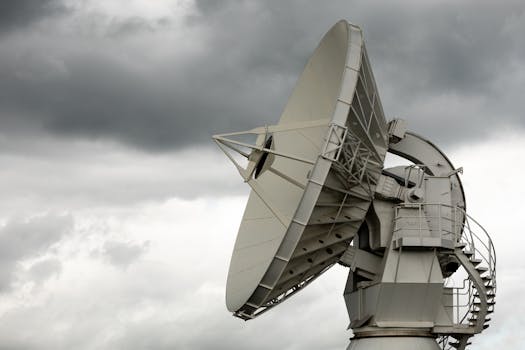GEO Satellites: Understanding the Technology and Applications of Geostationary Orbit Satellites
GEO satellites are a crucial part of modern telecommunications, providing a wide range of services including television broadcasting, internet connectivity, and weather forecasting. In this article, we will explore the technology and applications of GEO satellites, their importance in modern society, and the future of this technology.

GEO Satellites: Understanding the Technology and Applications of Geostationary Orbit Satellites
GEO satellites, or geostationary orbit satellites, are a type of satellite that orbits the Earth at an altitude of approximately 35,786 kilometers (22,236 miles) above the equator. At this altitude, the satellite’s orbital period matches the Earth’s rotational period, allowing it to remain stationary in the sky relative to a fixed point on the Earth’s surface. This unique characteristic makes GEO satellites an essential part of modern telecommunications, providing a wide range of services including television broadcasting, internet connectivity, and weather forecasting.
The concept of geostationary orbit was first proposed by scientist Arthur C. Clarke in 1945, and the first GEO satellite, Syncom 2, was launched in 1963. Since then, hundreds of GEO satellites have been launched, and they have become a crucial part of modern telecommunications infrastructure. GEO satellites are used for a variety of applications, including television broadcasting, telecommunications, weather forecasting, and navigation.
How GEO Satellites Work
GEO satellites work by transmitting and receiving signals to and from Earth stations, which are specialized facilities that communicate with the satellite. The signals are transmitted to the satellite using a large dish antenna, and the satellite then retransmits the signal back to Earth, where it is received by another Earth station. This process allows GEO satellites to provide a wide range of services, including television broadcasting, internet connectivity, and telephone communications.
GEO satellites are typically equipped with a range of instruments, including transponders, antennas, and power systems. Transponders are used to receive and retransmit signals, while antennas are used to transmit and receive signals. Power systems, such as solar panels and batteries, are used to provide power to the satellite’s instruments and systems.
Applications of GEO Satellites
GEO satellites have a wide range of applications, including television broadcasting, telecommunications, weather forecasting, and navigation. Television broadcasting is one of the most common applications of GEO satellites, with many satellites providing programming to millions of viewers around the world. Telecommunications is another major application, with GEO satellites providing internet connectivity, telephone communications, and other services to remote and underserved areas.
Weather forecasting is also an important application of GEO satellites, with many satellites providing images and data that are used to predict weather patterns and track storms. Navigation is another application, with GEO satellites providing location information and timing signals that are used in GPS and other navigation systems.
Importance of GEO Satellites in Modern Society
GEO satellites play a crucial role in modern society, providing a wide range of services that are essential to modern life. Television broadcasting, telecommunications, and weather forecasting are just a few examples of the many services that GEO satellites provide. In addition to these services, GEO satellites also provide a range of other benefits, including economic benefits, social benefits, and environmental benefits.
The economic benefits of GEO satellites are significant, with the satellite industry generating billions of dollars in revenue each year. The social benefits of GEO satellites are also significant, with many people relying on satellite-based services for communication, entertainment, and information. The environmental benefits of GEO satellites are also important, with many satellites providing data and images that are used to monitor and protect the environment.
In conclusion, GEO satellites are a crucial part of modern telecommunications, providing a wide range of services that are essential to modern life. The technology and applications of GEO satellites are complex and multifaceted, and they have a significant impact on modern society. As the demand for satellite-based services continues to grow, it is likely that GEO satellites will remain an essential part of modern telecommunications infrastructure for many years to come.
Focus Keyword: GEO satellites, the technology and applications of geostationary orbit satellites are complex and multifaceted, and they have a significant impact on modern society. GEO satellites are used for a variety of applications, including television broadcasting, telecommunications, weather forecasting, and navigation. The importance of GEO satellites in modern society cannot be overstated, and they will continue to play a crucial role in modern telecommunications for many years to come.



